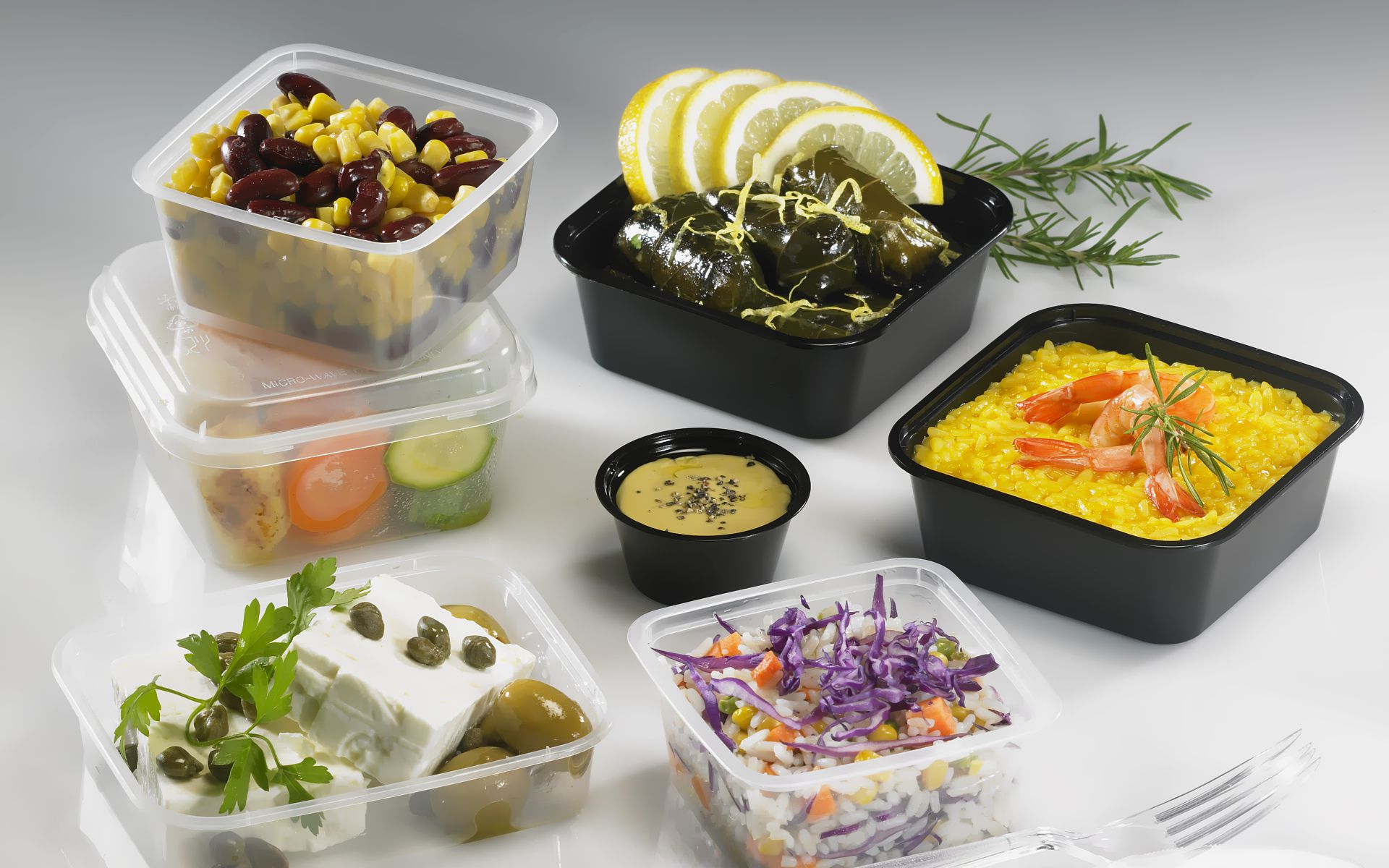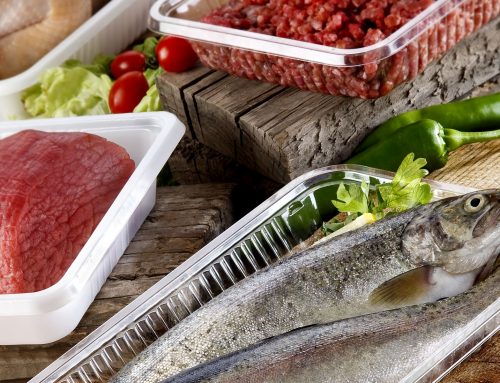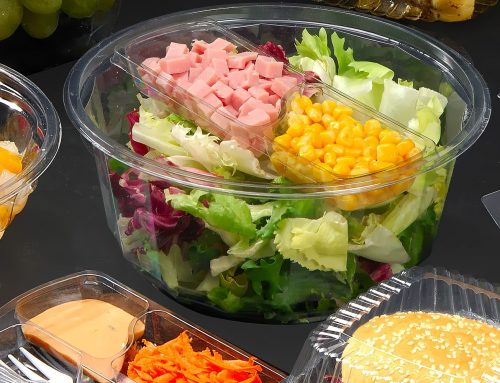During the last 50 years, the use of plastic products in the packaging of various foods and beverages or in the form of disposable containers has increased dramatically, so that the present era is called the plastic age. Plastics used for contact with food are mainly extracted from petroleum sources. Plastics are generally polymers made from raw materials called monomers. Monomers are toxic substances that are harmful to human health, and polymers are neutral and have no problems, but the problem is that usually in the process of preparing polymers, some monomers remain detachable. For this reason, if unused or unsuitable disposable containers are used to store food, there is a possibility that these monomers will be toxic to food. Therefore, great care should be taken in using plastics as food containers and no plastic should be used for food.
Another important point in using disposable utensils is related to the color of these utensils, which requires more care in using them, because basically disposable utensils are such that they are not able to retain the color and when in contact with tea or hot food. The existing color is dissolved and a layer of it enters the body with food. When using disposable containers, you should pay attention to the abbreviation that is engraved on the bottom of the container. Because in case of improper use of these products, many health problems due to the migration of chemical monomers from disposable containers to food, many problems such as: It will cause gastrointestinal and lung disorders, as well as cancer and other non-communicable diseases for the consumer.
Abbreviation and use of disposable containers: Disposable containers with the abbreviation (ps) on the bottom of which are made of polystyrene containers are used for cold drinks and temperatures below 40 degrees, but are not suitable for packaging food with a temperature above 65 and also packaging. Fatty foods such as butter, margarine, etc. are prohibited in all types of polystyrene containers.
Abbreviation for polyethylene (PE), propylene (PP), foamed polystyrene (EPS), and white polystyrene (HIPS) containers for packaging and storage of dairy products, oils, vinegar, and hot and humid foods. Rondama is not suitable for storing hot foods such as soup, etc.
The use of clear polystyrene containers (GPPS) is only suitable for cold drinks and not for hot foods such as tea and coffee.
Disposable containers of polyvinyl chloride (PVC) are used in food packaging such as chicken and fish and medicine capsules, chewing gum. Packaging with these types of containers is not very harmful in terms of dry matter, but they are unsuitable for wet foods, where the free monomer can migrate into the food and then into the body.
The point that experts have recently warned about is that in Iran, standard grades (food grade) are not produced for food and health food packaging, and the industrial type of these materials is used in the food and health industries, regardless of their harms.
At a time when the use of industrial packaging for food and packaging is completely obsolete all over the world, and even recently for home appliances and toys, this restriction has been introduced in the world, according to experts, in Iran, despite the supervision of the Ministry of Health. Also due to economic benefits, a group of manufacturers continue to use substances whose impact on public health in the long run is evident.
According to the existing instructions, it is forbidden to pack dry and wet food when filling and storing food or transporting it in various PVC containers. In general, clear, clear disposable containers are only suitable for cold foods and beverages and should not be used for hot drinks and foods. White, frothy disposable dishes are also suitable for cold, hot and humid foods, but should not be used for hot foods. For example, it is not recommended for pizza cooked at 140 ° C.
Transparent disposable tableware used in many religious organizations or ceremonies is made of polystyrene.
White foam disposable utensils used in many restaurants and offices are more resistant than transparent polystyrene utensils and do not decompose toxic and monomeric substances up to 70 to 80 degrees, but if hot food with a temperature higher than Stored in these containers at 70 to 80 degrees or if the storage time of food in these containers is more than 4 hours, the toxic effects of these substances enter the food and affect human health.
Disposable utensils made from second-hand materials have the greatest impact on human health, he added: “These utensils are recognizable by their appearance, which is usually brittle or in which there are wastes, black grains or pigments.” The most important feature of these containers is their very cheap price that people should know that they will have to compensate this cheap price in the future with huge medical expenses.
Among all types of disposable containers, drinking water bottles were named as the most consumed types of these containers. Bottles that, even in the warmer months of the year, even if they do not contain mineral water, are regularly filled with city water and placed in the refrigerator to provide cool water for the family, which freezes water bottles to break down polymers into toxic monomers. And in the long run, the carcinogenic effects of such actions manifest themselves in the gastrointestinal tract and brain.
The plants of these dishes are divided into two categories, the first of which is 100% degradable and their raw materials are of food origin and are produced from materials such as proteins and saccharins and are edible, but these dishes are not produced in Iran, but the category Second, they are 30 to 70 percent degradable and cannot be eaten, and their origin is often starchy. Advantages of using plant polymer include environmental compatibility, being free from any harmful hazards of plastic materials after contact with hot food, preparation of renewable raw materials, independence from petroleum products, less energy consumption in the production process. The main disposable containers are polymer and vegetable. These containers are made of cornstarch and are easily degradable in the environment or even recyclable for animal feed. Today’s science has identified the disadvantages of using disposable plastic containers to cause fatigue, nerve discomfort, low platelets and hemoglobin in the blood and even their carcinogenicity. Oil petroleum plastics in their various forms take 300 to 500 years to return to nature, but plant containers decompose within a maximum of 6 months and return to nature without any damage, re-creating fertility in the soil. The technology of producing disposable vegetable dishes was in the possession of four countries: Germany, England, America and Italy. But Iran was also able to acquire this technology as the fifth leading country in the world after a lot of research
However, these containers will mold if exposed to light, heat or moisture in the long run, so they are not suitable for long-term use in the presence of such foods.
Consider the following when using disposable containers:
When buying food, be careful not to use colored and recycled plastic.
Do not store hot food in disposable plastic containers.
Do not use the mineral water bottle frequently.
Use disposable containers and plastics that have been produced by reputable factories with complete specifications and a valid manufacturing license or entry permit from the Ministry of Health and Medical Education.
Disposable tableware of origin



Leave A Comment